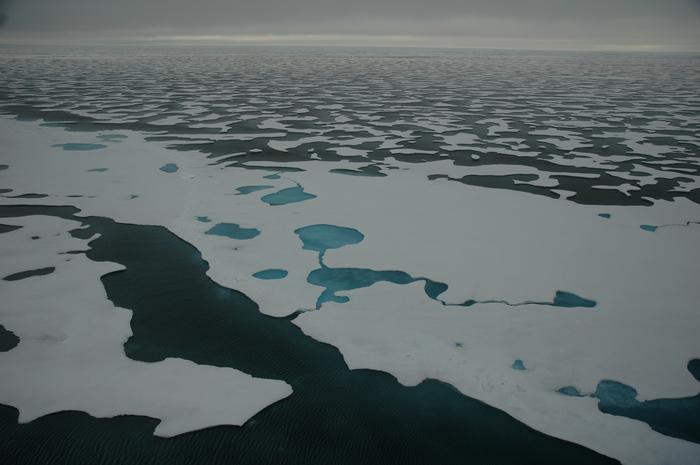Since regular satellite monitoring began in 1979, Arctic sea ice has decreased by more than 42%.
Climate models predict ice-free summers in the Arctic within the next few decades, but scientists are still uncertain about the impact on life on Earth.
Researchers have long known that fine-grained dust from space covers the Earth’s surface, falling from space at a constant rate and depositing in ocean sediments.
Now, a new study from the University of Washington shows that tracking where space dust falls and where it doesn’t can provide insight into how the extent of Arctic sea ice has changed over time.
“Being able to predict the timing and spatial pattern of future ice area loss could help us understand warming, predict changes in food webs and fisheries, and prepare for geopolitical change,” said Frankie Pavia, assistant professor of oceanography at the University of California, who led the study.
Measuring space dust levels across the Arctic
When stars explode or comets collide, cosmic dust swirls through space. As the Sun passes by, the cosmic dust is injected with a rare form of helium known as helium-3.
Pavia explained, “It’s like looking for a needle in a haystack. Small amounts of cosmic dust are falling everywhere, but Earth’s sediments are also accumulating pretty quickly.”
In this study, Pavia was more interested in the absence of cosmic dust.
“During the last Ice Age, there was very little cosmic dust present in Arctic Ocean sediments,” he says.
The researchers hypothesized that space dust could act as a substitute for ice before satellites could monitor changes in Arctic sea ice extent. Sea ice prevents space dust from reaching the ocean floor, but in the open ocean, space dust is deposited in sediments.
Researchers reconstructed the history of sea ice over the past 30,000 years by analyzing the amount of cosmic dust in sediment cores from three sites.
Rising Arctic sea ice levels indicate decline in space dust
The researchers found that year-round Arctic sea ice cover corresponds to less cosmic dust in the sediments. This was also observed during the last ice age about 20,000 years ago.
The researchers then matched ice cover with nutrient availability and showed that nutrient consumption peaked when sea ice cover was low and decreased as ice cover increased.
How do ice levels affect the food chain?
Data on nutrient cycling comes from tiny shells that were once inhabited by nitrogen-digesting organisms called foraminifera. Chemical analysis of the shells of these organisms reveals the proportion of total available nutrients consumed during their lifetime.
“As ice decreases in the future, consumption of nutrients by phytoplankton is expected to increase in the Arctic, with implications for food webs,” Pavia said.
Additional research is needed to determine what factors are causing changes in nutrient availability.
One hypothesis suggests that reduced sea ice increases the amount of nutrients available to surface organisms through increased photosynthesis, while another argues that melting Arctic sea ice dilutes nutrients.
Although both scenarios show an increase in consumption, only the first scenario shows an increase in ocean productivity.
Source link

